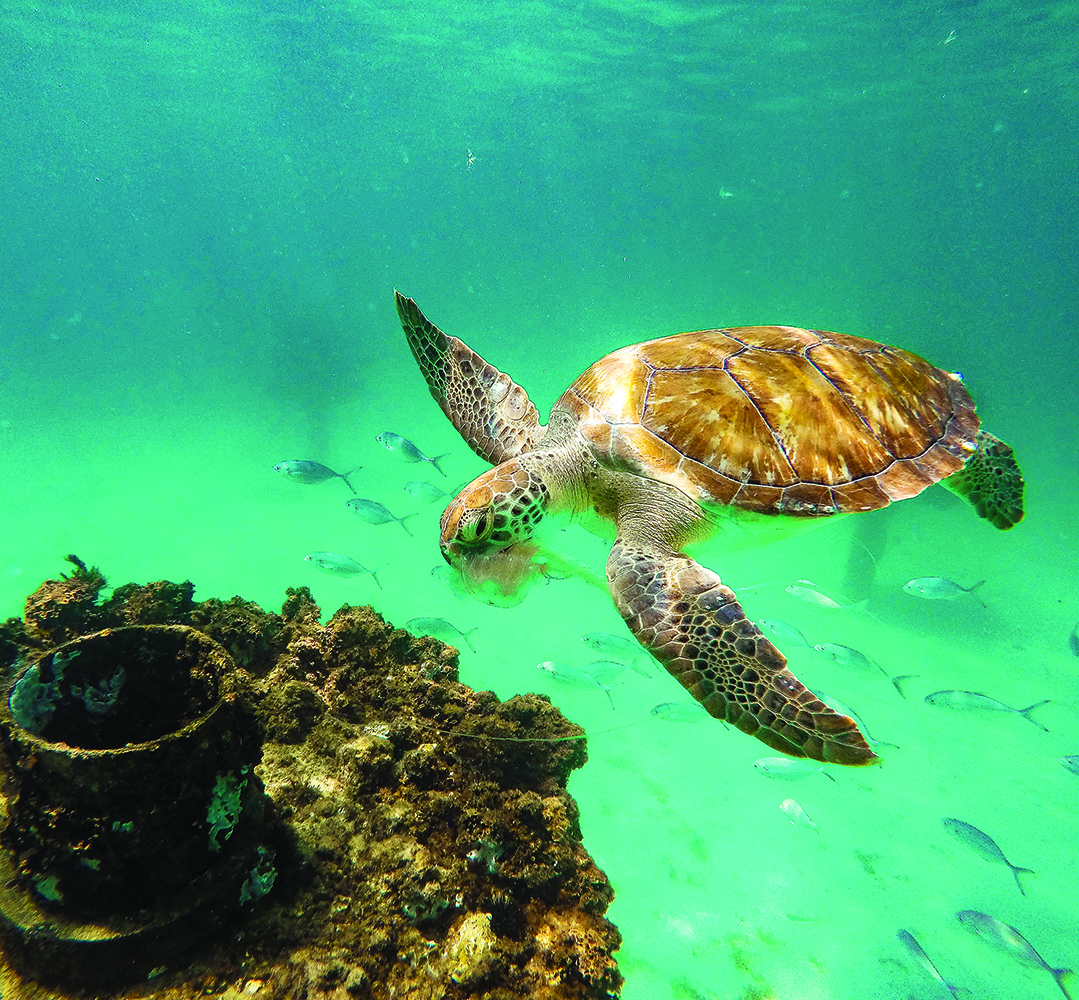
Very soon, webgoers are going to be able to get an up-close and personal view of what lies beneath the emerald waters of the Gulf Coast.
A new 360-degree underwater camera is set to be installed at the Navarre Beach Snorkel Reef and will be a first of its kind for the Gulf Coast.
The camera will allow anyone around the world to view live shots of the artificial snorkel reef, complete with everything that comes along with the underwater reef bed: snorkelers and sea creatures alike.
Part of the camera project was funded through a grant titled “Gateway to the Gulf” which was awarded to support non-profit Northwest Florida Marine Education and Discovery of Gulf Ecosystems, Inc. (EDGE) in 2014, which supports the Navarre Beach Marine Science Station (NBMSS) on Navarre Beach. Some of EDGE’s goals are to brand Navarre Beach as the destination for eco-tourism and to provide family oriented visitor events and education centered around a theme of sustainable marine ecosystems.
The company who manufactures the cameras, View Into the Blue, has other underwater cameras around the world including one in the Caribbean, California, Gibraltar and in North Carolina.
NBMSS Director Charlene Mauro said she first learned about the camera at a conference at Mote Marine Lab where she became intrigued about its potential.
“I thought the camera and its possibilities were a fantastic fit with what we do at the NBMSS and (at the time) the newly installed artificial reefs. It is awesome to see a program and camera finally happen in our area,” Mauro said.
The price of the camera, 4-day camera install, scientific nodes, hydrophone, cabling, permitting, technician and engineering fees and View Into the Blue’s travel expenses brought the grand total to $55,000. And every penny of that was covered by the grant that was awarded to EDGE.
Mauro said the camera is self-cleaning and will stand the test of time in its new saltwater atmosphere. Mauro, a Navarre High School marine science teacher, said her students are in the process of helping finish up the install alongside View Into the Blue by helping sort cables and chains that will feed to the camera to keep it in place and keep the live feed going.
“We are nearly finished with the installation. There were 35 students from my OCB2000 classes involved with cabling and beach portion of the install. They helped prep nearly 800 feet of (heavy cable), carry it to the trench that was dug by a former student who now works for the county,” Mauro said. “It was awesome to have new and former students help out. In addition to the students, Charles Stone with Blue Water Escape Charters, Carl Antonik and Tazz Felde with Hurlburt Field Dive Club (United States Air Force) and other SCUBA instructors and Dive Masters from the Under Pressure dive group assisted with the installation. There was quite a bit of coordination as to when the volunteer divers, engineers, and others involved were available at the same time.”
View Into the Blue staff flew down from Colorado for the install earlier this month and Mauro said the crew ran into a few hurdles during the install process, but they were able to get the project done regardless.
“The weather was a challenge this past week but we finished the beach preparation and the camera platform was installed,” she said.
Permitting for the project took about two years, which Mauro said wasn’t unexpected.
“To anyone working in the environmental fields and artificial reefs, that amount of time is not a surprise,” she said.
The camera will be equipped with a device that will be able to read water salinity and water quality, among other things within the Gulf of Mexico.
Mauro said the life expectancy of the camera is about 10 years and the NBMSS is looking for sponsors to help assist with the long-term costs associated with upkeep of the equipment.
Mauro said the camera is expected to go live sometime next week and that there are plans down the line to construct a viewing pavilion at the NBMSS of the feed.
Once the feed goes live next week, it will be available through the Navarre Beach website at www.floridasplayground.com and also on www.viewintotheblue.com.
Want to watch?
The video feed is expected to go live sometime next week. To view the feed, visit www.floridasplayground.com or www.viewintotheblue.com.
































